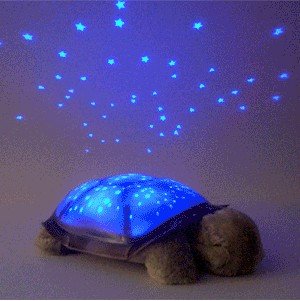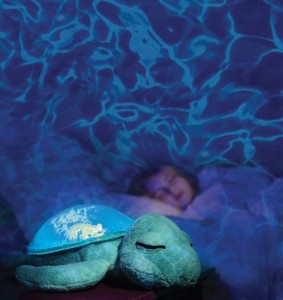“A year later at 8 years old, Lily developed a sleep disorder where she was waking up 5 & 6 times a night, every night for almost 8 months! Lily’s tiny little body was put on yet another medication Clonodine. The Clonodine didn’t help much as she went from waking 5 to 6 times a night to 2 to 3 times a night. It was not an easy time for anyone in our home!” ~ Dawn Falley
 Exhausted isn’t the best way for anyone to start their day. Unfortunately there are sometimes children or adults who have problems getting or staying asleep. Medicine shouldn’t be your first turn to option. There are so many others.
Exhausted isn’t the best way for anyone to start their day. Unfortunately there are sometimes children or adults who have problems getting or staying asleep. Medicine shouldn’t be your first turn to option. There are so many others.
CSI Sleep
Depending on the age see if you can figure out why the child isn’t sleeping. Is it due to nutritional needs (nursing) or due to comfort? Is the child is their own bedroom? And if so what type of night light if any? Are there medical reasons possible such as sleep apnea, low iron, tummy issues? We’ll explore all of that below.
The Traditions of Sleep
Rituals are important at bedtime. Maybe each night they take a bath and brush their teeth and get into their PJs right before you read them a story. Maybe then you put on some soft music such as the Disney Lullaby Album. (may want to listen to this as you read the page)
As one SLP said about her own special needs daughter who used to have trouble getting to sleep “the deep pressure of the weighted blanket, the familiar music of her favorite show (she didn’t watch, just listened) and her bunny whose ears she fidgets with using her hands. I worried that I’d create bad habits, but needed sleep terribly and thankfully, she now sleeps all night with only her bunny.”
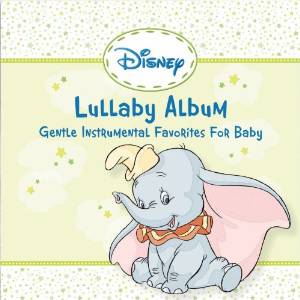 Doctors Report Why Sleep Matters
Doctors Report Why Sleep Matters
Scientists have discovered and proven how sleep is key to forming new memories and learning in one study. And there are numerous other reasons why sleep is so important especially for special needs children. For example one study found that sleep “cleans the brain of toxins” and suggest that “failing to clear away some toxic proteins may play a role in brain disorders.” Another study found sleep ‘boosts brain cell numbers and ramps up the production of cells that go on to make an insulating material known as myelin which protects our brain’s circuitry.”
Even naps can be helpful. One study found complex motor skills can be learned by taking naps. Taking breaks during tasks gives better results, says a study that was published in 2010 in the journal Neuron. Another study has shown that brief amount of sleep after learning preserves memories that, at times, last for years.”
Wear Them Out!
Exercise helps children fall asleep faster, study indicates
Tiring out children with physical activities helps them fall asleep faster at night, research indicates, suggesting that parents who drag their children away from the televison and down to the park will be rewarded at bedtime. Children who exercise less during the day take longer to fall asleep at night, according to new research.
Research published in the Archives of Disease in Childhood reports that every hour of the day children are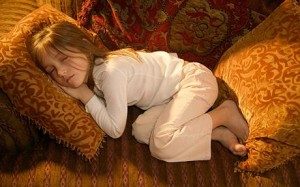 inactive adds three minutes to the time it takes them to fall asleep.
inactive adds three minutes to the time it takes them to fall asleep.
The study indicates that children who fall asleep faster also sleep for longer. Although, it appears one is not the direct consequence of the other.
The authors comment these findings will validate what many parents already believe: that tiring out a child with plenty of physical activity will increase the likelihood that she or he will sleep well.
They write in conclusion: “This study emphasizes the importance of physical activity for children, not only for fitness, improved mood, cardiovascular health and weight control, but also for sleep.” Read more
Exercise also has a number of positive effects on sleep. It increases deep sleep, and as shown in this study, helps one fall asleep faster and stay asleep, improving daytime concentration and overall function. This effect doesn’t seem to be because of physical exhaustion, but due to actual changes seen in brain wave patterns, as another study by the same group, published in the World Journal of Biological Psychiatry in July 2009, demonstrated. Read more
Sleepy Foods
Tart Cherry Juice
There is some evidence tart cherry juice may help, and from anecdotal feedback it’s helped a bit in our Cherab support group. Of course for kids you’ll want to probably mix the tart cherry juice with something a bit sweeter. One study found that a morning and evening ritual of tart cherry juice may help you sleep better at night, suggests a new study presented today at the Experimental Biology 2014 meeting. Researchers from Louisiana State University found that drinking Montmorency tart cherry juice twice a day for two weeks helped increase sleep time by nearly 90 minutes among older adults with insomnia.
Tryptophan
Some may point to supplemental forms of tryptophan, but you may want to start with dietary changes to include or increase foods that may help. Tryptophan is a biochemical precursor of serotonin, which means it is converted into serotonin during the metabolic process. Foods such as turkey are rich in tryptophan.
Does tryptophan make you sleepy?
SNOOZE FOODS THAT NATURALLY CONTAIN TRYPTOPHAN
Tryptophan is found in turkey, milk, fish and lots of other foods. There is evidence that Tryptophan helps with sleep. “Over the past 20 yr, 40 controlled studies have been described concerning the effects of L-tryptophan on human sleepiness and/or sleep. The weight of evidence indicates that L-tryptophan in doses of 1 g or more produces an increase in rated subjective sleepiness and a decrease in sleep latency (time to sleep” whey protein naturally contains the essential amino acid Trytophan
These are foods high in the sleep-inducing amino acid tryptophan:
- Dairy products: cottage cheese, cheese, milk, whey protein
- Soy products: soy milk, tofu, soybean nuts
- Seafood
- Meats
- Poultry
- Whole grains
- Beans
- Rice
- Hummus
- Lentils
- Hazelnuts, Peanuts
- Eggs
- Sesame seeds, sunflower seeds
Dietary can help children with severe sleep issues for numerous reasons. Either they are not getting enough of the nutrients their body needs due to feeding problems, or a metabolic disorder. Some parents assure their child is getting enough nutrients with a whole food nutritional products.
Dietary changes should be considered prior to medication. Especially since they can have better results. Dawn Falley’s daughter Lily who has autism and a seizure disorder is one example. Lily is one of the children.
“A year later at 8 years old, Lily developed a sleep disorder where she was waking up 5 & 6 times a night, every night for almost 8 months! Lily’s tiny little body was put on yet another medication Clonodine. The Clonodine didn’t help much as she went from waking 5 to 6 times a night to 2 to 3 times a night. It was not an easy time for anyone in our home!…The FIRST night Lily slept through, the ENTIRE NIGHT!! In the morning, my husband and I were up and in shock that she wasn’t. Thankfully once the doctor was aware of this, he took her off the sleep medication Clonodine within a week.”
Supplement Tryptophan Warnings from WebMD
While getting tryptophan from foods naturally is healthy and benign, supplementation has a number of warnings. Below are just a few, read more at WebMD
L-tryptophan is POSSIBLY UNSAFE when taken by mouth. It has been linked to over 1500 reports of eosinophilia-myalgia syndrome (EMS) and 37 deaths. EMS is a neurological condition with symptoms that include fatigue; intense muscle pain; nerve pain; skin changes; baldness; rash; and pain and swelling affecting the joints, connective tissue, lungs, heart, and liver. Symptoms tend to improve over time, but some people may still experience symptoms up to 2 years after they develop EMS.
Some people report that their symptoms have never gone away completely. In 1990, L-tryptophan was recalled from the market due to these safety concerns. After the limitation of L-tryptophan products, the number of EMS cases dropped sharply. The exact cause of EMS in patients taking L-tryptophan is unknown, but some evidence suggests it may be due to contaminated L-tryptophan products. About 95% of all EMS cases were traced to L-tryptophan produced by a single manufacturer in Japan. Currently, under the Dietary Supplement Health and Education Act (DSHEA) of 1994, L-tryptophan is available and marketed as a dietary supplement. L-tryptophan can cause some side effects such as heartburn, stomach pain, belching and gas, nausea, vomiting, diarrhea, and loss of appetite. It can also cause headache, lightheadedness, drowsiness, dry mouth, visual blurring, muscle weakness, and sexual problems.
Special Precautions & Warnings: Pregnancy and breast-feeding: L-tryptophan is LIKELY UNSAFE in pregnancy because it may harm the unborn child. Not enough is known about the safety of L-tryptophan during breast-feeding. Avoid using L-tryptophan during pregnancy and breast-feeding. A white blood cell disorder called eosinophilia: L-tryptophan might make this condition worse. L-tryptophan has been associated with the development of eosinophilia-myalgia syndrome (EMS). Liver or kidney disease: L-tryptophan might make these conditions worse since it has been associated with the development of eosinophilia-myalgia syndrome (EMS).
Foods with Melatonin
Research has shown that list of foods with melatonin is quite abundant. This hormone plays several important roles in our bodies, such as a sleep regulator, antioxidant and Glutathione booster. However, not all foods with melatonin are able to raise blood melatonin levels high enough to help with sleep disorders. The good news – even small amounts of melatonin are still able to act as a powerful antioxidant and aid in raising Glutathione levels. This information is very important if you are looking for natural ways to improve quality of sleep and add a powerful antioxidant to your diet but are unwilling to experiment with synthetic forms of melatonin. See the chart and complete list here.
Supplement Melatonin Research in Adults
Effect of oral melatonin and wearing earplugs and eye masks on nocturnal sleep in healthy subjects in a simulated intensive care unit environment: which might be a more promising strategy for ICU sleep deprivation?
Randomized clinical trial finds 1 mg melatonin before bed time in a noisy and lighted sleeping environment increased total sleep time and REM sleep time and decreased latency to falling asleep. It was more effective than placebo and the use of earplugs & eye masks. Read more
Supplement Melatonin Warnings from WebMD
While getting melatonin from foods naturally is healthy and benign, supplementation has a number of warnings. Below are just a few.
Children: Melatonin should not be used in most children. It is POSSIBLY UNSAFE. Because of its effects on other hormones, melatonin might interfere with development during adolescence. High blood pressure: Melatonin can raise blood pressure in people who are taking certain medications to control blood pressure. Avoid using it. Diabetes: Melatonin might increase blood sugar in people with diabetes. Monitor your blood sugar carefully, if you have diabetes and take melatonin. Depression: Melatonin can make symptoms of depression worse. Seizure disorders: Using melatonin might increase the risk of having a seizure. Read more
Iron Deficiency May Be Interrupting Your Child’s Sleep
A review article published in Sleep Medicine suggests that iron deficiency anemia, or low serum ferritin, disrupts optimal brain development and leads to altered behaviors in infants that can lead to persistent sleep problems later in childhood. As many as 1/4 of infants worldwide experience iron deficiency anemia (IDA), or a deficiency in oxygen-carrying red blood cells that results from a diet lacking in iron.
Abstract
Iron deficiency anemia (IDA) continues to be the most common single nutrient deficiency in the world. An estimated 20-25% of the world’s infants have IDA, with at least as many having iron deficiency without anemia. Infants are at particular risk due to rapid growth and limited dietary sources of iron. We found that infants with IDA showed different motor activity patterning in all sleep-waking states and several differences in sleep states organization. Sleep alterations were still apparent years after correction of anemia with iron treatment in the absence of subsequent IDA. We suggest that altered sleep patterns may represent an underlying mechanism that interferes with optimal brain functioning during sleep and wakefulness in former IDA children. See more
Abstract
To determine if there is a relationship between low serum ferritin and sleep disturbance in children with autism spectrum disorder, an 8-week open-label treatment trial with oral iron supplementation was conducted as a pilot study. At baseline and posttreatment visits, parents completed a Sleep Disturbance Scale for Children and a Food Record. Blood samples were obtained. Thirty-three children completed the study. Seventy-seven percent had restless sleep at baseline, which improved significantly with iron therapy, suggesting a relationship between sleep disturbance and iron deficiency in children with autism spectrum disorder. Sixty-nine percent of preschoolers and 35% of school-aged children had insufficient dietary iron intake. Mean ferritin increased significantly (16 microg/L to 29 microg/L), as did mean corpuscular volume and hemoglobin, suggesting that low ferritin in this patient group resulted from insufficient iron intake. Similar prevalence of low ferritin at school age as preschool age indicates that children with autism spectrum disorder require ongoing screening for iron deficiency. Read more
If your child tests low in iron, supplement under a doctor’s care and see if there are ways to increase iron through diet instead of supplementation if possible. Heme iron (from meat) is better at raising iron than non heme iron, and in general iron is better digested with vitamin C (so perhaps some orange juice with food rich in iron) Iron overdose has been one of the leading causes of poisoning deaths in children younger than 6 years. Read more
Scare Away Those Scary Monsters!
Got a child who’s afraid of monsters at bedtime? Mix up a bottle of monster spray! It’s an easy and effective way to help young children conquer their night-time fears and insecurities. One of the most common reasons, reported the parents, was because their children either feared the dark or were afraid of monsters or bad dreams.
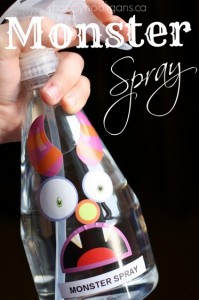
 There are various versions of this floating around the net, and this simple trick has worked for many parents in our nonprofit. I believe that Happyhooligans and PrudentBaby both do the best jobs I’ve seen of providing a step by step of how to make the bottle and spray, as well as explaining it’s use! Below is a combination of quotes from both sites.
There are various versions of this floating around the net, and this simple trick has worked for many parents in our nonprofit. I believe that Happyhooligans and PrudentBaby both do the best jobs I’ve seen of providing a step by step of how to make the bottle and spray, as well as explaining it’s use! Below is a combination of quotes from both sites.
Supplies
- spray bottle – dollar store (*if you’re re-using a bottle that held cleaning fluid, please wash it well)
- monster stickers – dollar store (or printables) OR MONSTER SPRAY! Label
- essential oil i.e. lavender, chamomile etc. (aromatherapy)
- water
- a bit of glitter -optional
(here’s an article that lists 20 essential oils that are reported to help with sleep)
To make your monster spray
Involve your kids in the process of decorating the bottle and mixing up the spray. When they participate in making their monster-banishing remedy, they’ll be excited to try it out, and may even look forward to bedtime tonight!
Allow your child to place stickers wherever he wants to. He’ll likely feel like he has more control over the monster situation if he’s permitted to design his “weapon” himself.
Now, Monster Spray may work better for some kids if it appears you went out and bought it at the store, in that case make it yourself during naptime..” Agree with this comment from Happyhooligans *Note: although it was suggested by several people, I would strongly advise against using a store-bought, commercial air-freshener as “monster spray”. Commercial fresheners are filled with chemicals and harmful ingredients. These, in my opinion, are not healthy for your children to inhale at any time, much less for hours, all night long. When possible, keep your child’s exposure to manufactured scents and chemicals to a minimum.
To Use
At bedtime tonight, let your child spray his or her bedroom before bedtime, paying special attention to any possible “points of entry” like closets, windowsills, doorways and under the bed. Place the bottle on your child’s bedside table, or somewhere near-by where he can reach if he’s scared in the night. Hopefully, with a bottle of monster spray close at hand, bedtime monsters will soon be a thing of the past for your family.” Again find much more info if needed at Happyhooligans and PrudentBaby.
Why Not Try An Epsom Salt bath?
Q: What is the anticipated effect from an Epsom Salt bath?
 Epsom Salts have long been used to stimulate detoxification, reduce inflammation to sore muscles, promote healthy circulation, and help with relaxation and normalizing sleep patterns.
Epsom Salts have long been used to stimulate detoxification, reduce inflammation to sore muscles, promote healthy circulation, and help with relaxation and normalizing sleep patterns.
Most children respond to an ES bath by appearing happier, more relaxed. Some parents report that their children are more responsive, more “with it”. Some parents who give the bath in the evenings report that their children are able to get to sleep easier, and have a more normal sleep pattern.
Given over time, the ES baths may help reduce sensory integration symptoms. Some of this effect may occur due to benefits of detoxification, but it is much more likely to come from direct effects on the nervous system. Read more
You may want to try adding a drop or two of lavender essential oil to the bath water too.
Dealing With Sensory Processing Disorder
Plush Animals or a Soft Blanket
Most children learn to self-soothe at nighttime. To help with self-soothing behaviors, you can try a special blanket, or stuffed animal (bunny or bear etc) to cuddle with. Some children with SPD find it comforting to rub soft fabric between their fingers.
Weighted Blanket
A weighted blanket is a therapeutic blanket that is made with weights to provide proprioceptive input to the body. Proprioceptive input means awareness of one’s body position in space. The effect is similar to when you swaddle a baby. Here’s more info on them from the SensoryProcessingDisorder website “Weighted blankets are a simple solution to what often appears to be complex attention, calming, or sleeping difficulties” including how to make your own.
Some Ready to Buy Sources
- SensaCalm
- Mosaic
- Sensory Goods
- Salt of the Earth
- Also check Amazon, Etsy, Ebay, Pinterest
Brushing
An early intervention OT consult is recommended, especially is sensory processing disorder is suspected. Brushing is an sensory technique that an OT can teach you, as it helps them to regulate their sensory system. You can google more about the Wilbarger brushing technique. Here’s one link, but it’s not recommended to do without an OT’s instruction.
Lights and Sounds
Sweet Sounds
“Bad sleep? Try some “pink noise.”
One study found that listening to pink noise increases deep sleep, enhances brain waves, and improves memory in subjects.” read more You can buy a “pink noise” machine, here’s what pink noise sounds like.
If your child has pet fish, you can keep them in their room with a filter and light in the tank. The sound of the filter provides that white noise and using the fish tank light as a night light.
Sleep Genius App
Another solution that you can download to your iPhone, Android -Free versions or 5 dollarsfor more options.
NASA Recognizes Sleep Genius Among 2015 Spinoff Success Stories
The research and technology used in Sleep Genius is being celebrated in the 2015 edition of NASA’s prestigious annual publication, Spinoff. Each year, Spinoff recognizes dozens of NASA technologies improving everything from medical devices and software to food and home products. Designed to showcase “the diverse benefits our nation enjoys from its investment in aeronautics and space missions,” the publication chose the “Sleep Genius” program as one of its featured technologies. Read more from the Sleep Genius website.
Special Nightlights
Even the color light coming from the nightlight can make a difference. Try to avoid bright blue, or dim green lights as both can have an affect on the body’s natural internal clock. Studies have found bright blue light from electronics, or dim green light can keep you awake, study shows; can help in Sleep Disorder Therapy.
“Blue light from electronics disturbs sleep, especially for teenagers… As lamps switch off in teens’ bedrooms across America, the lights from their computer screens, smartphones and tablets often stay on throughout the night. These devices emit light of all colors, but it’s the blues in particular that pose a danger to sleep. Blue light is especially good at preventing the release of melatonin, a hormone associated with nighttime.” Read more
Researchers show that green light is effective in eliciting non-visual responses to light such as resetting circadian rhythms, affecting melatonin production and alerting the brain. It has been previously shown that blue light plays an important role in impacting the body’s natural internal body clock and the release of hormones such as melatonin, which is connected to sleepiness, by affecting photoreceptors in specialized cells in the eye. In new research from Brigham and Women’s Hospital (BWH), researchers have found that green light also plays a role in influencing these non-visual responses. This research is published in the May 12 issue of Science Translational Medicine. Read more
“Researchers had thought the human sleep-wake cycle was affected by blue light, which is detected by a photoreceptor system in the eye that suppresses melatonin, a hormone that helps induce drowsiness. A study published today in the journal Science Translational Medicine showed that different eye cells, cone photoreceptors used for color vision — and most responsive to green light — also influence circadian patterns.” Read more
“A new study looked at the effect of light exposure at night — like that from phones or tablets — on the biology of teen sleep. The researchers found that children in early to middle puberty were especially vulnerable to suppression of melatonin, a hormone key to sleep timing.” Read more
Possible solution for using computers later in the day: f.lux
If you or your child does use a computer or smartphone late in the day, you may want to download a free app called F.lux From the website “Ever notice how people texting at night have that eerie blue glow? Or wake up ready to write down the Next Great Idea, and get blinded by your computer screen?
During the day, computer screens look good—they’re designed to look like the sun. But, at 9PM, 10PM, or 3AM, you probably shouldn’t be looking at the sun. f.lux fixes this: it makes the color of your computer’s display adapt to the time of day, warm at night and like sunlight during the day.
It’s even possible that you’re staying up too late because of your computer. You could use f.lux because it makes you sleep better, or you could just use it just because it makes your computer look better.” Learn more
Starry Sky Projectors
There are a number of kid’s projectors out there that turn their room into a beautiful starry night. One of them that appears to have great reviews is CloudB’s turtle – try experimenting with the various light colors to see which one may work best for your child.
Commercial for Cloud b Twilight Turtle
Dad Review of the Cloud b Turtles
Night Terrors -Clinically Proven Lully To the Rescue
The Sleep Guardian Lully is the first proven non-medication solution to stop night terrors. In scientific studies with over 10,000 nights of testing, the Sleep Guardian stopped 8 out of 10 night terrors. The Sleep Guardian is based on a tried-and-true technique called scheduled awakenings. Simply put you wake your child 15-30 minutes before their night terrors typically occur. This interrupts the unhealthy sleep cycle and prevents night terrors. Starting back in 1988, clinical studies have shown that this method has reduced 90% of night terrors. Read more
Crying It Out…Nope!
Social practices and cultural beliefs of modern life are preventing healthy brain and emotional development in children, according to an interdisciplinary body of research presented recently at a symposium at the University of Notre Dame. Modern parenting may hinder brain development, research shows “Life outcomes for American youth are worsening, especially in comparison to 50 years ago,” says Darcia Narvaez, Notre Dame professor of psychology who specializes in moral development in children and how early life experiences can influence brain developmen
Dr Sears doesn’t support the CSI method either. especially special needs children. Some cry so long and hard they vomit.
Bedtime Story Movies
You can also try playing the same short sweet kids movies or stories each night such as Mouse and Mole The following video is an example of an audio book but there are movies too. Even if you choose a movie, once your child has watched it a few times though, they don’t have to open their eyes and can go asleep to the story.
Mouse & Mole
Rule out Medical Reasons For Sleep Issues
In addition to sensory issues, it’s good to rule out any medical reasons for sleep including sleep apnea. So you could look into a sleep study. You can also look into a pediatric gastroenterologist exam to rule out if there are any tummy issues keeping your child awake.
LAST Resort Sleep Medication
Even though this is the last resort, too often it’s what is first prescribed to children having sleep issues, even children as young as two years old.
“Children with sleep problems are likely to be prescribed a sleeping pill or other medication approved only for adults, according to a new study.
When researchers from The Ohio State University and the University of Missouri evaluated 18.6 million children’s doctor visits for sleep problems, they found that 81% of visits included a prescription for a medication. The study appears in the Aug. 1 issue of the journal Sleep.
“The findings raise concern because of the large number of patients affected,” says researcher Milap C. Nahata, PharmD. Nahata is professor and division chairman at Ohio State’s College of Pharmacy and professor of pediatrics and internal medicine at the College of Medicine. “We tend to jump on medication right away.”
=====
Written by Lisa Geng, mother to two boys that were both “late talkers” who are doing great today. President and Founder of the Cherab Foundation, and Co Author of The Late Talker book St Martin’s Press
